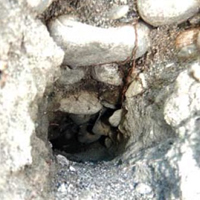Copying nesting attempts in a new site may be the wrong choice. A case in the European Bee-eater (Merops apiaster)

Submitted: 10 September 2020
Accepted: 18 January 2021
Published: 27 January 2021
Accepted: 18 January 2021
Abstract Views: 966
PDF: 301
Publisher's note
All claims expressed in this article are solely those of the authors and do not necessarily represent those of their affiliated organizations, or those of the publisher, the editors and the reviewers. Any product that may be evaluated in this article or claim that may be made by its manufacturer is not guaranteed or endorsed by the publisher.
All claims expressed in this article are solely those of the authors and do not necessarily represent those of their affiliated organizations, or those of the publisher, the editors and the reviewers. Any product that may be evaluated in this article or claim that may be made by its manufacturer is not guaranteed or endorsed by the publisher.
Similar Articles
- Alessandro Pavesi, Andrea Ravagnani, Black Kite status in Emilia-Romagna: an update , Rivista Italiana di Ornitologia: Vol. 94 No. 1 (2024)
- Mario Lo Valvo, Domenico Pieri, Nesting of the Spotless Starling, Sturnus unicolor, on the island of Favignana (Aegadian Islands, Sicily) , Rivista Italiana di Ornitologia: Vol. 91 No. 1 (2021)
- Davide De Rosa, Ilaria Fozzi, Alberto Fozzi, Mauro Sanna, Jan Škrábal, Rainer Raab, Benedetta Catiti, Andrea Rotta, Ivan Literák , Fiammetta Berlinguer, Mauro Aresu, A vanishing raptor in a Mediterranean island: an updated picture of Red kite (Milvus milvus) in Sardinia, Italy , Rivista Italiana di Ornitologia: Vol. 91 No. 1 (2021)
- Maurizio Fraissinet, Lucio Bordignon, Massimo Brunelli, Matteo Caldarella, Enzo Cripezzi, Stefano Giustino, Egidio Mallia, Maurizio Marrese, Nicola Norante, Salvatore Urso, Matteo Visceglia, Breeding population of Black Stork, Ciconia nigra, in Italy between 1994 and 2016 , Rivista Italiana di Ornitologia: Vol. 88 No. 1 (2018)
- Enrico Caprio, Ivan Ellena, Antonio Rolando, Multi-scalar analysis of bird communities in Monferrato Astigiano woodlands , Rivista Italiana di Ornitologia: Vol. 82 No. 1-2 (2012)
- Fabiano Sartirana, Rudy Valfiorito, [Nesting of Golden Eagle (Aquila chrysaetos) at an exceptional altitude for the Italian Alps] , Rivista Italiana di Ornitologia: Vol. 88 No. 2 (2018)
- Guido Trivellini, Damiano Preatoni, Marco Cantini, Mauro Belardi, Andrea Agapito Ludovici, Guido Tosi, A quantitative approach to biodiversity estimation: application to birds in Alps Ecoregion - priority area H1 , Rivista Italiana di Ornitologia: Vol. 82 No. 1-2 (2012)
- Giorgio Marini, Paolo Forconi, Impact of lead shots on a mountain pass in central Apennines , Rivista Italiana di Ornitologia: Vol. 82 No. 1-2 (2012)
- Carlo Urbinati, Francesco Renzaglia, Andrea Bartolucci, Paolo Giacchini, Sustainable forest management and habitat of diurnal raptors in the SIC Alpe della Luna-Bocca Trabaria (province of Pesaro and Urbino). , Rivista Italiana di Ornitologia: Vol. 82 No. 1-2 (2012)
- Walter Guenzani, Fabio Saporetti, Unmanaged forest and bird community: a study in north-western Lombardy , Rivista Italiana di Ornitologia: Vol. 82 No. 1-2 (2012)
<< < 4 5 6 7 8 9 10 11 12 13 > >>
You may also start an advanced similarity search for this article.


 https://doi.org/10.4081/rio.2020.478
https://doi.org/10.4081/rio.2020.478



